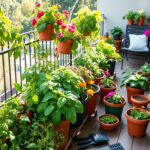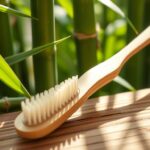Searching for the perfect garden irrigation system can feel overwhelming. I understand the struggle of looking for efficient watering options that don’t waste water. Through extensive research, I discovered that drip irrigation systems are a fantastic choice due to their water-saving benefits.
This article walks you through expert reviews to help you find the ideal system for your garden. Let’s dive in and learn together!
Key Takeaways
- Drip irrigation saves water and time by sending water directly to plant roots.
- There are different kinds of drip systems, like soaker hoses, emitter systems, and drip tape, that suit various garden needs.
- Installing a system is easy with the right tools and a clear set of steps. Regular checks help keep it working well.
- Some top brands for drip irrigation include Rain Bird, Gilmour, and DripWorks. They offer quality products for efficient watering.
- Customer reviews can guide you in choosing the best system for your garden based on your experiences.
What is Drip Irrigation?
Drip irrigation is a method that waters plants slowly and directly at their roots. This system saves water and helps plants grow healthy.
Definition
Drip irrigation is a method that waters plants slowly and directly. Long tubes with small openings deliver water right to the roots. This system saves time every season and reduces the need for physical effort.
I find it becomes easy to manage watering without dragging hoses around my garden.
These systems are known for saving water compared to traditional hoses or sprinklers. In fact, they can conserve a significant amount of water while ensuring plant health. Choosing an efficient irrigation system helps save energy too, which is important in gardening today.
Benefits
Drip irrigation is efficient and reduces workload in the garden. I have seen great results with it.
Here are some benefits of using a drip irrigation system:
- Time-saving: Drip irrigation systems save hours of watering time every season. Using this method allows me to focus on other gardening tasks.
- Energy conservation: These systems work automatically, so I do not need to move hoses or sprinklers around. This saves energy and makes gardening easier.
- Easy setup: Good irrigation systems come with clear instructions. I found them easy to set up and master.
- Water savings: Drip irrigation uses less water compared to traditional hoses or sprinklers. It conserves significant amounts of water, which is good for my plants and the environment.
- Targeted watering: The system delivers water directly to plant roots through long tubing with evenly spaced openings. This helps keep my plants healthy and thriving.
- Healthy plants: Efficient irrigation promotes plant health by providing consistent moisture levels in the soil.
- Flexibility: Soaker hoses and emitter systems allow me to adapt my watering needs based on my garden layout and types of plants I grow.
- Cost-effective: While there is an upfront cost, drip irrigation can save money on water bills over time due to its efficiency.
- Reduced weeds: Watering only where needed helps reduce weed growth in my garden beds.
- Sustainable gardening practice: Using drip irrigation fits into my goals for sustainable gardening by conserving resources while keeping my plants happy.
Types of Drip Irrigation Systems
Drip irrigation systems come in different types. Each type suits various needs and garden settings.
Soaker Hoses
Soaker hoses are a great option for garden irrigation systems. They have long tubing with evenly spaced openings. This lets water seep out slowly. I find them easy to use and install since they come with clear instructions.
Using soaker hoses saves time and effort in watering plants. They conserve water, often using less than traditional hoses or sprinklers. In my experience, these hoses work well for flower beds and vegetable gardens alike.
They help keep the soil moist without wasting water, making them an efficient choice for gardeners who care about water conservation in gardening.
Emitter Systems
Emitter systems are a great choice for gardens. They use small tubes with holes that release water right to the root zone of plants. This means less water is wasted compared to traditional garden hoses or sprinklers.
I have seen how they save significant amounts of water while keeping my plants healthy.
These systems come in different styles and sizes. Some can be set up easily without professional help, which is perfect for DIY fans like me. With the right instructions, mastering the setup became simple.
Emitter systems offer efficient watering solutions that fit well in raised beds and potted plants too.
Drip Tape
Drip tape is a great choice for gardeners. This system consists of long strips of thin plastic with tiny holes. Water seeps out slowly through these holes, providing gentle moisture to plants.
I like using drip tape because it saves time and water. It uses less water than traditional hoses or sprinklers.
Setting up drip tape is easy. Good systems come with clear instructions that are simple to follow. Once installed, it automatically waters my plants while I focus on other tasks in the garden.
Drip tape is especially useful for rows of vegetables or flowers in a large garden since it covers a wide area evenly.
Micro-misting Systems
Micro-misting systems offer a unique way to water plants. They use fine mist to hydrate gardens gently. This method is great for flowers and delicate plants. I have found that these systems conserve more water compared to traditional hoses or sprinklers.
They deliver moisture directly where it’s needed without wasting any.
I noticed that micro-misting can help create humidity in dry conditions, which benefits many plants. While using a micro-misting system, I saved hours of watering time each season.
Some setups are easy enough for anyone to master with clear instructions provided. In my experience, they work well alongside other irrigation solutions like soaker hoses and emitter systems as part of effective irrigation technology for plant health and efficient gardening practices.
Next, let’s explore the pros and cons of drip irrigation systems.
Pros and Cons of Drip Irrigation Systems
Drip irrigation systems have many good points and some downsides. They can save water but may need higher upfront costs. Some systems are easy to set up, while others require more work. To learn more about these pros and cons, keep reading!
Cost
Cost is an important factor when choosing a drip irrigation system. I have found that good systems vary in price. Some affordable options suit small gardens, while larger setups can cost more.
Initial costs might seem high, but these systems save money over time by using less water than traditional hoses or sprinklers. For instance, they can cut water usage significantly.
Installing a drip irrigation system often pays off in saved time and effort too. I appreciate how easy some brands make the setup with clear instructions. DIY options also exist for those who want to build their own at lower costs.
Overall, investing in an efficient irrigation system helps maintain plant health while conserving energy and resources in my garden.
Equipment and installation
I found that drip irrigation systems are easy to set up. Most come with clear instructions that help me get started quickly. The main parts include long tubing and emitters spaced evenly along the length.
This setup allows water to flow directly to my plants’ roots.
Installing a drip system saves time each season. I no longer need to constantly move a hose around my garden. Instead, I can just turn on the water and let it do its job. A good system should be user-friendly and efficient for my gardening needs.
Now, I’ll explain how to maintain this great watering option for my plants.
DIY options
DIY options for drip irrigation systems can be simple and cost-effective. I enjoy creating my own setup using basic supplies. You can use soaker hoses or create emitter systems with easily available materials.
This method saves water compared to traditional garden hoses.
Setting up a DIY system can save hours of watering time each season. Good instructions are usually included, making it easy to master the process. Many find these options fun and rewarding as they improve plant health while being efficient in water use.
Moving on to installation and maintenance will help ensure your garden thrives effectively.
Water efficiency
Drip irrigation systems help me save a lot of water. They use long tubing with evenly spaced openings. This allows water to reach the roots directly. Because of this, I waste less water compared to using garden hoses or sprinklers.
Using drip irrigation means I can grow plants more efficiently. It allows me to keep my garden healthy while conserving energy too. Good systems make watering much easier and restore moisture right where it’s needed most.
From my experience, efficient irrigation systems really boost plant health in any type of garden.
Choosing the Best Drip Irrigation System for Your Garden
Choosing the best drip irrigation system for my garden can be fun. I need to think about what my plants need and which system works best for me.
Factors to consider
I want to help you choose the best drip irrigation system for your garden. Several factors will make a big difference in your decision.
- Size of your garden matters. A small garden may only need soaker hoses or a basic emitter system. Large gardens might require more extensive setups like drip tape or micro-misting systems.
- Water needs of plants vary. Different plants have different watering needs. Knowing these helps to select an efficient irrigation system for plant health.
- Budget is important. Drip irrigation systems come in many price ranges. Some systems are cheaper but may not last as long as others, which can save money over time.
- Installation ease matters too. Good irrigation systems come with instructions that are easy to follow. If I can set it up, you can too!
- Maintenance should be considered early on. Ongoing maintenance is key to keeping the system running smoothly and saving water efficiently.
- Geography plays a role in choosing an irrigation system for your vegetable garden. Some areas get less rain, making efficient watering options more critical.
- Energy conservation is significant with drip systems compared to traditional hoses or sprinklers. They save hours of watering time every season while using less water overall.
- DIY options exist for those who enjoy hands-on work and want to save money on installation costs.
- Customer reviews provide valuable insights from other gardeners’ experiences with specific brands and products before buying any equipment.
- Finally, finalizing the type depends on how much time and effort you want to invest in setting up and maintaining the system over its lifetime.
Next, I’ll cover how to install and maintain a drip irrigation system effectively.
Recommended brands and products
Choosing the right drip irrigation system is crucial. Several brands offer reliable and effective watering systems for plants.
- Rain Bird: This brand is known for its high-quality emitter systems. They save significant water compared to traditional garden hoses or sprinklers.
- Gilmour: Gilmour’s soaker hoses are popular for their ease of use. They can cover a large area and require little maintenance.
- Netafim: This brand provides advanced drip tape options. Their products are efficient and designed to conserve water while watering options for gardens increase.
- DripWorks: DripWorks offers various micro-misting systems that work well in different climates. They provide clear instructions, making setup easy and quick.
- Orbit: Orbit has DIY options that suit many gardeners’ needs. Their kits come with everything needed for installation, saving time and effort.
- Gardena: Gardena’s products are user-friendly and ideal for potted plants or small raised beds. Their systems help ensure water efficiency in gardening.
- HydroLogic: HydroLogic specializes in sustainable gardening practices with efficient irrigation equipment. Their systems focus on plant irrigation methods that save water over time.
- Aqua Globe: Aqua Globe offers unique watering tools perfect for busy gardeners or those who travel often. These tools efficiently release water into the soil as needed.
- Econo-Watering Systems: Econo provides affordable drip irrigation solutions without sacrificing quality. Their equipment covers a range of garden sizes, from small plots to large areas.
- Flantor: Flantor produces versatile tubing with evenly spaced openings suitable for various plants. This makes them great choices for vegetable garden irrigation options.
Selecting one of these recommended brands can lead to successful irrigation system installation and effective plant care in every garden you manage.
Customer reviews and experiences
Customer reviews show mixed experiences with drip irrigation systems. Many users love how these systems save hours of watering time each season. They found that the setup was easy to master since good systems come with simple instructions.
Some gardeners enjoy how they can set up a system and not worry about moving hoses around.
Water efficiency is a big plus according to several reviews. These systems save significant water compared to traditional garden hoses or sprinklers. However, some users faced challenges with installation and maintenance issues over time.
Knowing what others experienced helps me choose the right system for my garden watering needs. Next, I will explore installation and maintenance tips for a drip irrigation system.
Installation and Maintenance of a Drip Irrigation System
Installing a drip irrigation system is easy if you follow simple steps. I will share tips for keeping it in good shape, too. If you’re curious about how to do this right, keep reading!
Step-by-step guide
Setting up a drip irrigation system is simple. Follow these steps for success.
- Gather your materials. You will need tubing, emitters, connectors, stakes, and a water source.
- Plan your layout. Map out where the plants are located. This helps in placing the tubing correctly.
- Cut the tubing to length. Make sure each section reaches from the water source to the plants.
- Attach emitters to the tubing. These small devices release water directly to the roots.
- Connect sections of tubing with connectors. Use these to join pieces as needed for your garden.
- Secure your system with stakes or clips. This keeps everything in place and prevents movement during watering.
- Turn on the water supply slowly. Check for leaks at connections and around emitters.
- Adjust emitter flow if necessary. Some plants may need more or less water based on their needs.
This guide makes installation easy and ensures a productive setup for my garden’s drip irrigation system.
Next, I will cover ongoing maintenance tips to keep everything running smoothly.
Ongoing maintenance tips
Ongoing maintenance keeps my drip irrigation system running well. Regular care helps save water and time.
- Check the tubing regularly for leaks or damage. Fix any issues promptly to avoid wasting water.
- Clean the emitters at least once a month. Clogs can stop water from getting to plants.
- Inspect filters often. A clean filter ensures water flows smoothly to the drip lines.
- Monitor the pressure in the system. Too much pressure can burst the tubing, while too little can reduce water flow.
- Flush the system twice a year. This removes debris and keeps everything clear.
- Adjust watering schedules as needed throughout the seasons. Plants need different amounts of water in hot and cold months.
- Cover exposed tubing during winter to prevent freezing damage. Protecting it now means less hassle later on.
- Store any unused equipment properly after the growing season ends. Keeping it safe extends its life for next year’s garden watering techniques.
- Always keep an eye on your plants’ health and growth patterns. This helps me know if adjustments are needed in watering them efficiently.
- Evaluate your setup each year for improvements or upgrades. Better systems help conserve energy and time spent maintaining a garden efficiently with a drip irrigation method.
Troubleshooting common issues
I have faced some common problems with my drip irrigation system.
Here’s what I learned:
- Clogged emitters are a frequent issue. Debris or minerals can block the openings. Regular cleaning helps keep them clear.
- Uneven watering happens sometimes. Check if any tubes are kinked or damaged. Adjusting the lines can fix this problem.
- Low water pressure might occur. Ensure that the main water source is flowing well. A pump may be necessary for larger gardens.
- Leaks can develop at connection points. Tighten fittings to stop leaks from becoming bigger issues.
- Overwatering can happen with certain setups. Monitor soil moisture levels to avoid drowning plants.
- Weather changes affect performance too. Drip systems work best in calm weather without heavy rain or wind.
- Ponding water indicates issues with drainage or flow rates as compared to traditional hoses and sprinklers.
Keeping these tips in mind will make installation and maintenance easier for your drip irrigation system in your garden, ensuring efficient watering throughout the season ahead.
Conclusion
Choosing the right drip irrigation system can make gardening easier. I save time and water with these systems. Many options fit different needs, from soaker hoses to drip tape. Proper installation and care keep my garden healthy.
Explore what suits your garden best!
Frequently Ask Questions (FAQ)
What is a drip irrigation system for gardens?
A drip irrigation system is a type of watering system used in gardening. It provides efficient water use by delivering it directly to the plant roots.
How do I choose the best drip irrigation system for my garden?
Choosing the best drip irrigation system involves understanding different types of irrigation systems and their efficiency, as well as considering your specific garden needs.
Can expert reviews help me select the right watering system?
Yes, expert reviews can provide valuable insights on various types of watering systems including their effectiveness and suitability for different gardens.
Does using a drip irrigation promote water-efficient gardening?
Absolutely! Drip Irrigation Systems are known to promote water-efficient gardening by minimizing waste and ensuring each plant receives adequate hydration.
















